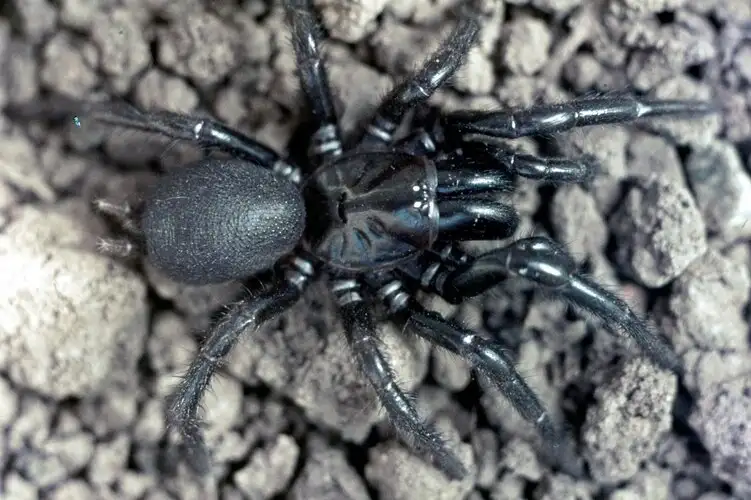
Whip Spider / Tailless Whip Scorpion
Order Amblypygi (whip spiders / tailless whip scorpions)
Whip spiders, also known as tailless whip scorpions, belong to the arachnid ···

Water Spider
Argyroneta aquatica (Clerck, 1757)
The Water Spider, more precisely the Diving Bell Spider,refers to the specie···

Two-spined Spider
Poecilopachys australasia (Griffith & Pidgeon, 1833)
The Two-spined Spider is the common name for Poecilopachys australasia, a sm···

Tube Spiders
Primarily family Segestriidae and related tube-dwelling spiders
Tube spiders is a common name for spiders that build tube-like silken retrea···

Triangular spiders
Arkyidae, especially genus Arkys (representative triangular spider group)
Triangular spiders is an informal name for a group of small spiders that hav···

Trapdoor spiders
Idiopidae and related trapdoor spider families (representative group)
Trapdoor spiders are a broad group of small to medium sized mygalomorph spid···

Tasmanian Cave Spider
Hickmania troglodytes
The Tasmanian Cave Spider is a distinctive large cave and forest dwelling sp···

Sydney Funnel-web Spider
Atrax robustus O. P. Cambridge, 1877
The Sydney Funnel-web Spider is one of the best known highly venomous spider···

Sydney Brown Trapdoor Spider
Arbanitis rapax (representative brown trapdoor spider from the Sydney region)
The Sydney Brown Trapdoor Spider is a medium sized, burrow dwelling mygalomo···

Swift Spiders
Nyssus coloripes (representative species of the swift spiders group)
Swift Spiders are a group of small, fast moving ground spiders best known fr···

St Andrews Cross Spider
Argiope keyserlingi (and closely related cross-marked Argiope species)
The St Andrews Cross Spider is a striking orb-weaver best known for the bold···

Southern Sydney Funnel-web Spider
Atrax montanus Rainbow, 1914
The Southern Sydney Funnel-web Spider (Atrax montanus) is a large,highly ven···

Slater-eating Spider
Dysdera crocata C. L. Koch, 1838
The Slater-eating Spider is a ground-dwelling hunting spider that specialise···

Silver Orb-weaving Spiders
Mainly family Araneidae (silver-patterned orb-weaving spiders such as some Argiope and Leucauge species)
Silver orb-weaving spiders are not a single species but a loose group oforb-···

Scorpions
Order Scorpiones
Scorpions are arachnids in the order Scorpiones and represent one of the old···

Sac Spiders
Cheiracanthiidae (notably the genus Cheiracanthium)
Sac spiders are a broad group of spiders that build small silken retreats or···

Rufous Net-casting Spider
Asianopis subrufa (formerly Deinopis subrufa)
The Rufous Net-casting Spider (Asianopis subrufa, long known under theolder ···

Red-headed Mouse Spider
Missulena occatoria
The Red-headed Mouse Spider (Missulena occatoria) is a large Australian mous···

Redback Spider
Latrodectus hasselti
The Redback Spider (Latrodectus hasselti) is one of Australia’s best-known ···

Newcastle Funnel-web Spider
Atrax christenseni
The Newcastle funnel-web spider (Atrax christenseni), nicknamed“Big Boy”, ···

Net-casting Spiders
Deinopidae (e.g. Deinopis, Menneus)
Net-casting spiders are remarkable predators in the family Deinopidae. Inste···
